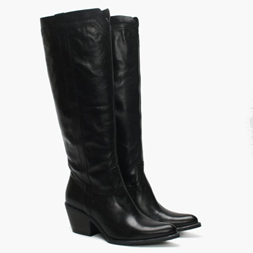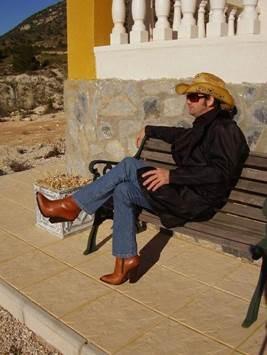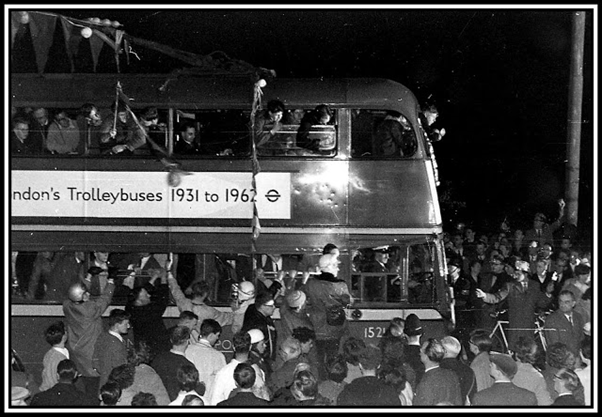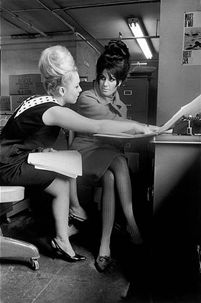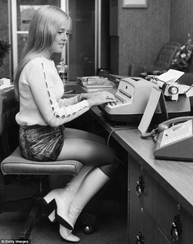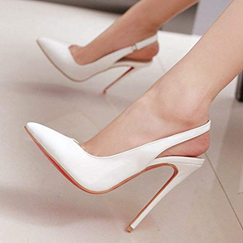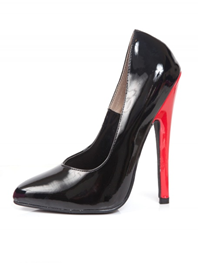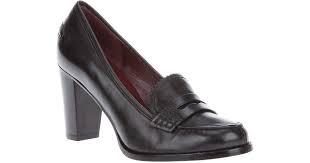
Puffer
Members-
Posts
980 -
Joined
-
Last visited
-
Days Won
138
Content Type
Profiles
Events
Forums
Gallery
Everything posted by Puffer
-
You might consider Miguel Jones in Mexico: http://www.custom-boots.net/ His made-to-measure boots are reasonably-priced; I have one pair (see below) and am pleased with their fit and quality. - pic here:
-
I would agree that knee-length boots should be a perfectly acceptable fashion for men, although much will depend on the styling. A plain 'riding boot' with an almost flat heel should cause no adverse reaction (as Shyheels has found out) but is that what we really want? To my mind, the boot should be close fitting and worn over skinny (or at least straight/narrow) jeans/trousers - and with an almond or chisel toe to minimise the 'beetle-crusher' look. A stacked bock or cuban heel (say 2 - 2.5") would look less boring than a minimal flattish heel, but a higher heel could be fine if it wasn't too slim. I'm not sure about straps or decorations - probably a 'step' too far - and in the UK the same goes for cowboy boots unless they are not too fancy, no more than calf high and worn under jeans; this is not the Wild West! Something like these, perhaps?
-
Not my style, but I can see why you like them and how they might harmonise. I do hope however that you will not be wearing them with the same sort of worker boots as the female model is wearing on the web page; her outfit as a whole rather suggests that she should be out buying fish in a wholesale market- only needing a flat cap! The Topshop website reveals there are some very nice ankle boots with moderate (Cuban) heels on offer at silly prices - but I guess the challenge will be finding any still in stock in the largest sizes. The (allegedly) 'latest' styles with slanting or other oddly-shaped heels are not nearly so wearable - where is fashion going?
-
That must be worrying - although we don't know your age and general situation. Were you able to wear 'ordinary' (flat/boring) shoes during the period of swelling? Sane - are you sure?? HHP appears to have lost a number of stalwarts who seemingly fell foul of 'management'. But there are also a number of extremists whose activity perhaps puts others off as it is often difficult to identify comfortably with what they say and (allegedly) do.
-
But surely some members can make a positive contribution rather than just sit back waiting for someone else to do so? I have contributed in the past but the seemingly minimal feedback (good, bad or indifferent) to my latter efforts did not encourage further significant investment of my time. That, however, should not be seen as a valid deterrent to others with a story to tell or an observation or adventure to report ... OVER TO YOU!
-
Not quite true - and not very helpful either. Why not resume posting and see what happens?
-
Did you get anywhere with this?
-
By coincidence, I have this morning taken in a packet from Royal Mail for a near-neighbour, who was out. As I expected, I had to sign for it and my name and house number were recorded on the postman's hand-held device. If the record of your packet delivery is incomplete, I would suggest that this indicates either (a) that someone at or in the immediate vicinity of your flat accepted it and the postman treated it as properly delivered to your address, so no alternative address was entered; or (b) theft in transit (presumably by the delivery postman), which is rather unlikely. In either case, a false name/signature was given to cover this up. I do hope Royal Mail is able to establish the details and you will, at least, be compensated.
-
Then ask the seller to investigate with Royal Mail! And notify eBay of the non-receipt, which should in turn also tackle the seller. You should at least get your money back. Someone (possibly the postman) has apparently signed for the shoes - and you should be able to show that it wasn't you. If they were intercepted or stolen, it seems unlikely that whoever has (or had) them knew what the package contained until it was opened, so if useless they might have been dumped.
-
If this was a tracked postal delivery (letter post or parcel??), you should be able to find the delivery details without delay. If letter post and you have a regular postman, he might be able to remember details if you ask him - but maybe too long ago for easy recall. Good luck.
-
Can't you establish with the carrier the address to which the parcel was delivered? Or maybe it was 'diverted' in transit (dishonest delivery man?) and the signature is a fabrication.
-
Very nice! What size and heel height are they?
-
This pic has been on the internet for some time, but is worth another airing. The boots are, I believe, from the erstwhile Omano range and have a heel of around 5.5". In my opinion, the overall look is well-coordinated, relaxed and masculine - although the straw hat might not appeal to all!
-
"Last minute" meeting around the UK?
Puffer replied to FastFreddy2's topic in Heelbucks chit chat Cafe
I bow to your superior (and possibly intimate) knowledge of such activity! -
"Last minute" meeting around the UK?
Puffer replied to FastFreddy2's topic in Heelbucks chit chat Cafe
There's always the Treasures of Tooting Common. -
"Last minute" meeting around the UK?
Puffer replied to FastFreddy2's topic in Heelbucks chit chat Cafe
As a matter of interest, what footwear were you wearing, and did your trousers provide cover or not? Having just returned from my own modest European holiday, I'm increasingly sympathetic to your disenchantment with overseas travel. Quite apart from having mediocre weather (mostly better at home last week, I understand), the aggravation and delay endemic in any air travel is no encouragement. I hate getting up at around 3am to go to the airport, endure all manner of inconveniences and then fly back over my own house some four hours later whilst crammed into a too-small seat. Whilst my break (weather aside) was fairly relaxing and enjoyable, I too can think of better ways to deplete my sons' inheritance. -
Chapter 4 – From school to work A notable event that I failed to mention in the last chapter was the demise of the London trolleybus. I had grown up with trolleybuses, which predominated the bus routes in my home area and further afield too. Despite their ‘green’ credentials (which today would have been a big ‘plus’), trolleybuses were seen as inflexible and inferior to a diesel bus such as the ‘Routemaster’. As nearly all of them still in use in London at the end of the 1950s were regarded as life-expired, the decision was taken to scrap them. Ironically, my area had been the first to get trolleybuses (replacing trams in 1931) and became the last to lose them – on 8 May 1962. The event was marked by a large local turn-out to welcome in the last bus in the early hours of 9 May; I was present with my father – we are somewhere in the crowd pictured below: It was some years before I saw ‘1521’ (or any other London trolleybus) again, until I enjoyed riding on one at the East Anglia Transport Museum, Carlton Colville (near Lowestoft, Suffolk) – well worth a visit! My schooldays continued, with O-Levels sat in 1964 and then A-Levels in 1966. I had intended to go on to university to obtain a degree in engineering, but alas it was increasingly obvious to me that my mastery of the necessary school subjects was not going to be to a good enough standard. I therefore decided instead to embark on a professional career, for which I could study by correspondence course whilst being ‘gainfully employed’. A few years later, I realised that this was probably a wise move, as many of my contemporaries at school had got their university degrees but not necessarily any worthwhile employment. (Ultimately, I ended up with two professional qualifications, each the equivalent of an honours degree, so I felt that I could hold my own despite never attending university.) As the 1960s progressed, life in England underwent significant change, to which no-one was immune. The period of often drab austerity which dominated the 1950s was replaced by one of growing wealth and opportunity – ‘You’ve never had it so good’ – and technological advance. But morals, fashions and music underwent much change too – and not in my opinion always for the best, as the ‘Swinging Sixties’ took hold, displacing the ‘Rock-and-Roll’ era. Women’s hemlines went up and their heels and hair went down, with tights replacing stockings, whilst many of both sexes began to follow a hippy or flower-power ‘free love’ lifestyle, with an increasingly colourful and often bizarre appearance. Mini-skirts and go-go boots on ‘dolly birds’ were all very well, but I much preferred the look of the early 60s that combined elegance with femininity. The pics below illustrate this contrast. Of course, the situation got even worse (in my view) when we entered the 1970s – but that is for later. I left school in the summer of 1966 and had a break of several weeks before I started work in a professional office a couple of miles from home. My father had shown a rare instance of generosity in not only ‘keeping’ me during that break period but also buying me my first ‘office suit’. My work was by no means all office-based as I had to visit clients in and around most of Greater London, and sometimes beyond, travelling by public transport. I was already familiar with most parts of London so this posed no problems for me, but it did open my eyes to much of the wider world, especially in the City and what is now Docklands. I soon found that I much preferred the environment of the City to that of the West End, which I have always found a somewhat uncomfortable mix of pretension and hustling, overlaid with an element of sleaze. The City seemed more civilised and respectable, with the women in particular dressed more to my liking. Certainly, there were many in the late 60s who still preferred to wear suits or separates with pencil skirts (usually just above the knee) and pointed stiletto courts, often 4” or higher. Most of the men however dressed a tad too conservatively for my taste. An acquaintance in a City office told me that there was a recently-dated notice stating: ‘Male staff are reminded that it is ungentlemanly to be seen in the street without a hat’. Bowler hats were still quite common, although seldom worn by those under 30 or so. But at least long hair and patterned shirts were rare east of Temple Bar. When not at work, I had to keep up with my correspondence course studies, with an initial exam in 1968, in which I did quite well. Time for significant social activity was still limited but I joined a local school of ballroom dancing which became my regular entertainment venue. I made a number of friends there of both sexes and went out elsewhere with a few of the girls I met. Several of the girls favoured stilettos, for dancing and otherwise, but alas they were increasingly considered unfashionable by many – and notable public sightings were becoming fewer. I do however recall several which made a lasting impression. One in 1968 was a tall slim brunette in Clapham making easy progress in pointed white sling-backs with a full 5” stiletto – a style I really like and similar to the pic below. Others from the same period included an older woman making her way cautiously down the exit ramp at Kingston station (which could be slippery when wet) in striking blue courts with contrasting red heels that were close to 5.5”, much the same as those below. And a young office-worker in Liverpool Street Arcade who was having difficulty in her 5” black patent courts; I wonder if she persevered and with what result?
-
My reaction to dww's comment was one of sorrow. I invited comment at the outset but (Freddy excepted) have had none. There must be something to say that is not necessarily 'off-thread', especially given the broad coverage of my exploits? I had thought that dww in particular (who must be a close contemporary in age) would have something to say, given his recent brief account of his own 'formative years'. As to the content of my Chronicle, there is not much of substance that I could add; my other sightings and experiences, if remembered, would be little more than repetition. But the later accounts, yet to appear, may be more detailed as more happened and more is remembered. One more chapter may be expected before I take a brief holiday. Yes, I could find some illustrations - but they would be library items rather than my own and you, dear reader, can find them as readily as I can, if interested! But here are a few pics of women in 'smart' fashion typical of the period around 1960, as worn for more formal business or social activity. The accompanying stiletto heels were often rather higher than those shown - anything from 3 - 4" was commonplace and 4 - 5" favoured by some women, of all ages. Perhaps surprisingly, women quite often dressed formally within the home, or outdoors for local shopping etc - in dresses and stilettos and sometimes with a hat.
-
Chapter 3 - At grammar school In September 1960, I started at an all-boys’ grammar school in West London. I travelled there by train, with one change in the morning and two going home, taking about half-an-hour. (My free season ticket proved very useful as it could be used at weekends too and got me most of the way into central London.) I soon got to recognise a number of regular travellers, either on my trains or waiting at the stations I used. A number of women whom I saw regularly were dressed smartly ‘for the office’ and usually in stiletto heels. One I well remember seeing most days when I changed trains was around 50, had ginger hair and invariably wore high black patent stiletto courts – at least 4.5” – although her gait was not very elegant. The many students at any of the several colleges along my line generally followed the prevailing fashion, albeit often not quite so elegantly as those commuters in employment. The girls favoured pencil skirts and the boys narrow trousers, in both cases usually teamed with winkle-picker shoes. My school, although fairly relaxed in terms of ‘rules’, had a compulsory uniform and forbade the wearing such trousers or shoes. But a number of the boys did so and generally got away with it – a particularly popular style was the pointed Chelsea boot, typically with a high zipped or elastic shaft. The Beatle-inspired boots with Cuban heels (typically 2.5 – 3” high) appeared a little later, around 1965. One of my classmates wore a very pointed pair – but it was to be another 45 years before I got some for myself! I did however get some chisel-toed flat boots and side-buckled shoes, after I overcame parental objections, and wore them regularly to school. Many pupils from several other schools I saw frequently broke wholeheartedly whatever uniform rules applied – especially those requiring caps or hats to be worn. Some girls in particular endeavoured to wear tighter skirts, discreet make-up and jewellery, along with kitten heels – or anything but the prescribed flat ‘school’ shoes (with ankle socks for the younger ones). I got to know most of West London well, as various school trips (and the weekly journey to the hated sports ground for an afternoon’s purgatory) took me to most parts. The sights and sounds of this cosmopolitan area made quite an impression, particularly that of the growing immigrant West Indian population. But this was not long after the Notting Hill race riots and discrimination was common and quite blatant. A number of the rather run-down tenements along Shepherds Bush Road, for example, clearly displayed notices declaring ‘No blacks; no Irish; no dogs’ to deter potential tenants. But those who had found a home there seemed generally colourful and cheerful, even if their houses and jobs were not. In the warmer weather, the women typically wore brightly-coloured dresses, teamed with hats and white stiletto courts, and their children usually looked very smart when in their best clothes for church or outings at the weekend. In my view, they set a good example which was not easy to beat. School work took up much of my time, along with my essentially indoor hobbies - particularly model making and stamp collecting. There was limited opportunity for socialising outside my immediate family group, and both that and leisure trips were somewhat restricted in scope as we never had a car. However, public transport links were quite good and I made much use of them for weekend jaunts, by myself or with the family. We joined regular summer Sunday excursions by train to the Sussex coast and our annual fortnight’s holiday in an English or Welsh destination was invariably reached by train. Although these expeditions permitted some ‘girl spotting’ (and discreet heel appraisal), there were few opportunities to meet the girls themselves That situation prevailed, alas, until after I had left school, as I shall touch upon in the next chapter.
-
'The Sun' on 9 May ran a feature about one of its reporters dressing to emulate the 'Harry Styles' look - as seen recently at the Met Gala. See here: https://www.thesun.co.uk/fabulous/9033421/man-tries-harry-styles-met-look-london/ For those who can't see the article, I attach one pic below He doesn't look too bad imho, although the mismatched nail varnish does him few favours. The boots have quite a modest cuban heel and look perfectly good for male street wear. The overall reaction (if any) from onlookers as he went around in London seemed generally positive.
-
Chapter 2 - At junior school In the autumn of 1956, I left the infants school and moved into the adjoining ‘junior mixed’ school for the next four years. The scene was much as before – a sea of matronly frumpiness but with the addition of rather stern men in sports jackets. The deputy head, another pleasant and effective teacher in her 40s, was however an exception. She was a diminutive and neat woman who invariably wore stilettos – usually black suede ‘baby dolls’ with a heel of at least 3.5”. Her glasses were retained by a cord round her neck and perched on her fairly prominent bosom when not being worn. A never-forgotten event at the end of my third year was the retirement of the headmaster, a well-respected man whose rather formal ‘tweed suit and brogues’ appearance belied a kindly nature. During his retirement speech in front of the whole school and a number of parents (many of them former pupils), he burst into tears. He had been understandably overcome by the emotion of the moment, which we all briefly shared sympathetically with him. For the first couple of years, the secondary modern school on the same site was also ‘mixed’ and the older girls there (14 – 16) were not obliged to wear uniform and took advantage of that, with some seen in the prevailing fashions, including winklepickers and kitten or modest stiletto heels. Outside school, I had joined what was then known as the ‘Wolf Cubs’. In addition to ‘Akela’, there were two or three young women who helped with our activities from time to time. One of them, in her early twenties, was fairly tall and slim and in the summer often wore thinly-strapped slingback sandals with 3” stilettos. Not the most practical of footwear for active service but nice to look at; I have favoured them ever since. For the record, my experience of wearing any women’s footwear during this period was limited to a few attempts at trying-on a few of my mother’s shoes or sandals, out of pure curiosity. Alas, my feet were almost too big and anyway her styles were unexciting. How I envied those friends whose mothers or sisters had what was (to me at least) better and more adventurous taste – although I doubt their shoes would have fitted either. Once, during a game of hide-and-seek in a mate’s house, I found by chance a pair of his older sister’s white stiletto courts. Alas, they were just too small, despite being marked as an ‘8’ – probably American sizing but this puzzled me for years. I left the junior school in the summer of 1960 and, having passed the entrance exam, was awarded a free place at a good grammar school in West London, starting there in the September. This opened-up a whole new world for me, as I shall describe in the next part of this chronicle.
-
Now, that loafer is a nice shoe! The loafer style (with anything from a 3" block heel to a 5" thin stack) is surely one of the best unisex styles; serviceable and sleek without being clumpy. A man's shoe purloined by the ladies and given a higher heel. About time we took it back into our wardrobes. These are well-suited to blokes:
-
I hope that your former 'maths' teacher ['math' is purely the American version, and should stay there] discovered the peep-hole that you also drilled in her door - or is that extra mural activity the subject of your withheld 'sad tale'? I'm pleased you like the initial Chronicle offering - more to come. But I have to say that I belive that most of us really do lead dull lives - perhaps one really decent stiletto sighting per annum that comes to mind when researching my memoirs. And that is, in retrospect, a great disappointment.
-
As a fellow 'older diesel' car driver who lives near enough to central London to consider driving into or through it, I share your well-stated concerns. My trips nowadays are rare enough for the impact not to be of great concern, but I do resent very much the effective 'ban' now imposed - and which will get much worse in less than two years when the entire area within the North and South Circular Roads becomes the 24-hour charging zone. The latter will concern me more as it will effectively (very effectively) stop me from venturing briefly into, say, Lewisham, or Hammersmith or some such non-central area to pick up or drop off some large or heavy item that I could only transport in my car. I will not pay a ransom for doing this. And what of the residents or businesses located there? I know they have some temporary concessions, but they will (eventually) have to change their vehicles or face every-day swingeing costs - in the region of £100 per day for goods vehicles. That must mean that anyone living within the North/South Circulars and buying something (a fridge, a settee, a garden shed) that has to be delivered by road from a distance will likely have to pay a huge premium for its delivery, even if the same vehicle can make several drops in the same trip. Likewise, who will buy from businesses there, especially if collection is needed? I do however use the train, underground and buses to get into and around London; they pose no problems in navigation etc for me. I agree that they are not particularly cheap, but the true cost comparison with driving is not necessarily unfavourable, unless two or three are travelling together. The biggest drawback of public transport is the limitation on what can be conveniently carried (or comfortably/discreetly worn). The new charges are really a con, or at least primarily a revenue-raiser. They apply the typical British rule that one is totally prohibited, for the alleged benefit of the environment and civilisation, of doing anything useful, convenient or pleasurable - unless of course one is prepared to pay through the nose for it, when it suddenly becomes permitted - welcome even. (Rather like smoking, isn't it?)
-
This is the first chapter of ‘The Puffer Chronicle’ – an account of my modest involvement with high heels over the years. If you have any questions or constructive comments, I will do my best to answer them, but please understand that certain things in my life must remain confidential. Looking back over what is now quite a long life, I cannot really remember how or when my interest in high heels (or, indeed, women’s footwear in general) truly started. It probably stemmed from an accumulation of minor experiences and observations gained as a young boy. I had a growing perception that there were distinct differences between ‘boys’ and ‘girls’ and how they normally dressed and behaved. I realised that some ‘girly’ things were not permitted for boys (or men) and were therefore somewhat mysterious and, in their way, both attractive and enticing. Certainly, there was little to stimulate interest at my home in West Middlesex in the 1950s. I had a younger brother (but no sisters) and a father who was distinctly old-fashioned in dress – and usually in outlook too. My mother (aged 30 when I was born) never had any aspirations to a glamourous or even particularly fashionable appearance. She was something of a ‘free spirit’ and could well have been a hippy if they had been invented when she was a teenager. She rarely wore footwear with any sort of heel (and never above about 2” or stilettos) but liked flat sandals, although here again they were generally more frumpy than smart. I don’t recall any relatives, family friends or neighbours whose clothing or footwear was particularly elegant either – but we were still emerging from the austerity and rationing that followed the Second World War. The one exception was a cousin by marriage (aged around 30 in the late 1950s) who was fairly short and invariably wore 4” stilettos; a pleasure to see when we met perhaps once a year. Of course, there were sightings in the wider world – this was the start of the ‘rock-and-roll era’ and plenty of young (and not so young) women were embracing its typical fashions. Tight or full skirts, beehive hair and, of course, pointed stilettos were everyday-wear for many. I started at infants school in the autumn of 1953. Unusually, my teacher for all three years there ‘moved up’ with my class. She had a kindly and effective influence (and imparted in me much valuable knowledge, well-remembered to this day) and we were all fond of her. As she had at least one daughter living abroad, she was probably in her early 40s and was tidy and presentable rather than intentionally smart in what she wore. The other teachers - all women - dressed similarly, although the headmistress was always well-groomed and usually wore low-heeled suede court shoes. (It was rare to find any teacher, male or female, whom one might consider to be ‘well-dressed’ – and my observations suggest that nothing much has changed in 60 years.) I had to go into the local hospital to have my tonsils removed, and in fact was there on my seventh birthday - so got an extra helping of jelly and ice cream. The nurses were talking about Bill Haley and Elvis Presley, then relatively unknown but soon to become famous. Those were the days when nurses wore ‘proper’ uniforms, with seamed stockings. Matron and some of the other senior nursing staff looked very elegant in their close-fitting dresses with starched aprons and caps, and wore high-heeled ‘Oxford’ lace-ups - a style that I will always associate with ‘women in uniform’. Back at school, my perception of my teacher changed dramatically towards the end of my final year in her class in 1956. We had some sort of formal event at the school – probably a visit by the mayor or some such – and she dressed quite elegantly for the occasion. I was blown away by the sight of her black patent court shoes, with pointed toes and stiletto heels that must have been close to 4.5”, which she wore effortlessly. Alas, there was no repetition and mediocrity reigned for the rest of my time there, with little change following my 'promotion' to the junior school, as I shall describe in the next instalment.


